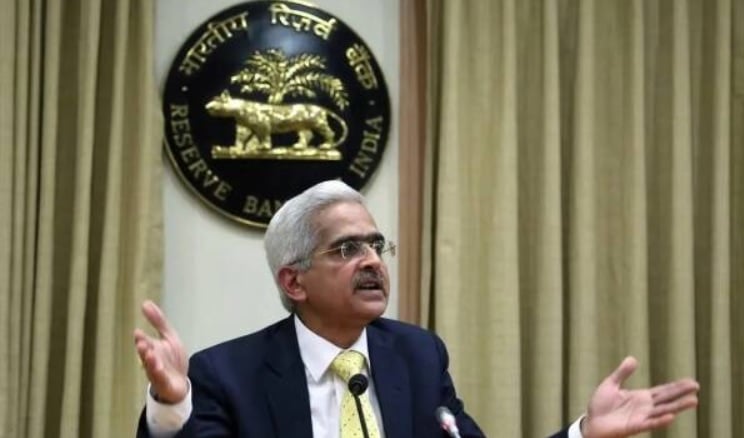What’s in today’s article?
- Why in news?
- Monetary Policy Committee (MPC)
- What is Monetary Policy Committee (MPC)?
- News Summary: RBI’s latest monetary policy
- What were the other key highlights of the RBI’s latest monetary policy release?
- What will be the impact of this decision?
- What are the reasons for the pause?
Why in news?
- After raising repo rate in six consecutive policies, recently, the Reserve Bank of India (RBI) announced that it would pause raising interest rates.
- This decision was taken even as inflation continues to remain above the tolerance band of 2-6 per cent.
- It kept the repo rate unchanged at 6.5 per cent amid concerns over the global banking crisis.
- Repo rate is the rate at which the Reserve Bank of India lends money to commercial banks in the event of any shortfall of funds.
Monetary Policy Committee (MPC)
What is Monetary Policy Committee (MPC)?
- Overview
- Monetary policy refers to the policy of the central bank with regard to the use of monetary instruments under its control to achieve the goals specified in the RBI Act.
- The primary objective of the RBI’s monetary policy is to maintain price stability while keeping in mind the objective of growth.
- In May 2016, the RBI Act was amended to provide a legislative mandate to the central bank to operate the country’s monetary policy framework.
- This amendment lays down that
- the Monetary Policy Committee shall determine the Policy Rate required to achieve the inflation target”, and
- that the decision of the Monetary Policy Committee shall be binding on the Bank.
- Monetary policy refers to the policy of the central bank with regard to the use of monetary instruments under its control to achieve the goals specified in the RBI Act.
- The Committee
- Under Section 45ZB of the amended RBI Act, 1934, the central government is empowered to constitute a six-member Monetary Policy Committee (MPC).
- MPC will determine the policy interest rate required to achieve the inflation target.
- The first such MPC was constituted on September 29, 2016.
- Members of MPC
- As per the amended RBI act, the MPC shall consist of \
- the RBI Governor as its ex officio chairperson,
- the Deputy Governor in charge of monetary policy,
- an officer of the Bank to be nominated by the Central Board, and
- three persons to be appointed by the central government.
- As per the amended RBI act, the MPC shall consist of \
News Summary: RBI’s latest monetary policy
- In a surprise move, the Monetary Policy Committee (MPC) of the RBI unanimously decided to keep the repo rate unchanged at 6.50%.
What were the other key highlights of the RBI’s latest monetary policy release?
- Focus on the withdrawal of accommodation
- MPC also decided to remain focused on the withdrawal of accommodation to ensure that inflation progressively aligns with the target, while supporting growth.
- Growth projection
- The RBI has projected real GDP growth for 2023-24 at 6.5 per cent.
- This is higher than the forecast of 6.4 per cent made in the February 2023 policy.
- Inflation forecast
- The RBI has projected CPI inflation to be at 5.2 per cent for 2023-24, lower than the expectation of 5.3 per cent announced in the February 2023 policy.
- This was based on the assumptions of an annual average crude oil price (Indian basket) of $ 85 per barrel and a normal monsoon.
- The RBI has projected CPI inflation to be at 5.2 per cent for 2023-24, lower than the expectation of 5.3 per cent announced in the February 2023 policy.
What will be the impact of this decision?
- Relief to borrowers
- This decision will give relief to borrowers as the external benchmark-based lending rate (EBLR), which are linked to repo rate, will not increase.
- EBLR is a new benchmark for floating-rate loans introduced by the RBI in 2019.
- Under this system, banks have to link the interest rates charged on various loans, to one of four external benchmarks.
- These benchmarks are the RBI’s repo rate, the 3-month or 6-month Treasury Bill yield, or any other benchmark published by the Financial Benchmarks India Private Ltd. (FBIL).
- This decision will give relief to borrowers as the external benchmark-based lending rate (EBLR), which are linked to repo rate, will not increase.
- Growth favoured
- The pause by the RBI will help favour the growth-inflation trade-off towards the former.
- This comes in the backdrop of many global agencies lowering India’s growth forecasts for this financial year amid expectations of global economic slowdown and monetary tightening by other countries.
- Decoupling of interest rate action by the RBI from global central banks
- The current pause is being seen as a move by RBI to decouple from the global tightening cycle.
- Central banks of developed countries are raising its interest rates currently.
- Many industry leaders predictably welcomed the decoupling of interest rate action by the RBI from global central banks.
- This move will ring-fence domestic financial stability and protect economic growth.
- At the same time, it will also keep the door open to resume the fight against inflation in a few months’ time.
- The current pause is being seen as a move by RBI to decouple from the global tightening cycle.
What are the reasons for the pause?
- Moderation in inflation rate forecast for FY24
- The moderation in inflation rate forecast for FY24 to 5.2 per cent from 5.3 per cent earlier has imparted some breathing space to the RBI to pause its rate hike cycle.
- There are, however, lingering concerns over the entrenched and high core inflation.
- The moderation in inflation rate forecast for FY24 to 5.2 per cent from 5.3 per cent earlier has imparted some breathing space to the RBI to pause its rate hike cycle.
- Global conditions and slump in Indian market
- The RBI also outlined risks from protracted geopolitical tensions, tight global financial conditions and global financial market volatility to its monetary policy outlook.
- These uncertainties have resulted into lower level of private consumptions and tepid private investments.
- Many experts saw high interest rates as a crucial factor in dampening demand.
Q1) What is external benchmark-based lending rate (EBLR)?
External benchmark-based lending rate (EBLR) is a system of linking the interest rates charged by banks on loans to external benchmarks. In India, the Reserve Bank of India (RBI) mandated that all new floating rate loans to medium, small and micro enterprises (MSMEs), as well as all floating rate loans to retail borrowers, must be linked to an external benchmark from October 1, 2019. Under EBLR, the interest rate charged on loans will be determined by adding a spread or markup to an external benchmark rate.
Q2) What is monetary policy of RBI?
The Reserve Bank of India (RBI) is the central bank of India, responsible for formulating and implementing monetary policy in the country. The primary objective of the monetary policy of RBI is to maintain price stability while promoting economic growth.
Source: Pause, not pivot, says RBI governor as repo rate stays unchanged at 6.5% | Indian Express | Indian Express
Last updated on June, 2025
→ UPSC Notification 2025 was released on 22nd January 2025.
→ UPSC Prelims Result 2025 is out now for the CSE held on 25 May 2025.
→ UPSC Prelims Question Paper 2025 and Unofficial Prelims Answer Key 2025 are available now.
→ UPSC Calendar 2026 is released on 15th May, 2025.
→ The UPSC Vacancy 2025 were released 1129, out of which 979 were for UPSC CSE and remaining 150 are for UPSC IFoS.
→ UPSC Mains 2025 will be conducted on 22nd August 2025.
→ UPSC Prelims 2026 will be conducted on 24th May, 2026 & UPSC Mains 2026 will be conducted on 21st August 2026.
→ The UPSC Selection Process is of 3 stages-Prelims, Mains and Interview.
→ UPSC Result 2024 is released with latest UPSC Marksheet 2024. Check Now!
→ UPSC Toppers List 2024 is released now. Shakti Dubey is UPSC AIR 1 2024 Topper.
→ Also check Best IAS Coaching in Delhi





















